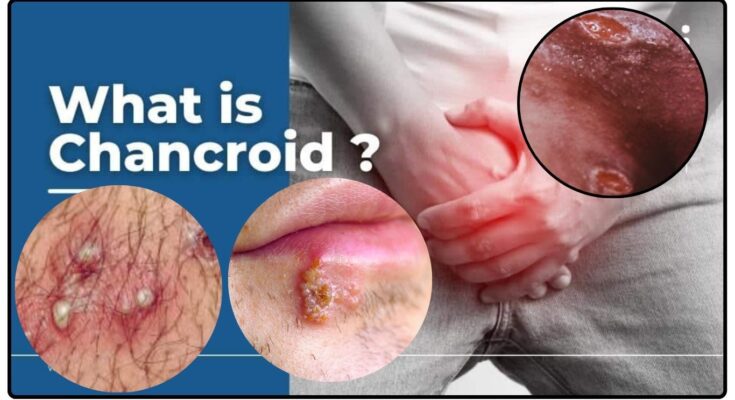Let’s talk about something uncomfortable but important: chancroid, a sexually transmitted infection (STI) that causes nasty genital ulcers. If you’ve never heard of it, you’re not alone. Chancroid is rare in the U.S., but it’s still a big deal because those sores hurt, spread easily, and increase your risk of HIV. We’ll break down what chancroid is, how to spot it, and why getting treated fast can save you from serious trouble. No jargon, just straight facts you can use.
What Is Chancroid? (Hint: It’s Not Herpes)
Chancroid is a bacterial STI caused by Haemophilus ducreyi. Unlike herpes (which is viral and stays in your body forever), chancroid can be cured with antibiotics. But here’s the catch: It causes open, painful sores on your genitals or around your mouth. These ulcers bleed easily, make peeing or sex agony, and can lead to swollen lymph nodes in your groin.
Why it matters: If left untreated, those ulcers can get infected, leave scars, or make it easier to catch HIV.
Chancroid Symptoms: How to Spot the Red Flags
Symptoms usually show up 4–10 days after exposure. Here’s what to watch for:
- Stage 1: Small, red bumps on your genitals, anus, or mouth.
- Stage 2: Bumps turn into open sores within 1–2 days. These ulcers:

- Are painful (unlike syphilis sores, which don’t hurt).
- Have ragged edges and a yellowish-gray base.
- Bleed or ooze if touched.
- Swollen lymph nodes: About half of people get tender lumps in their groin. These can burst into abscesses (pus-filled pockets) if ignored.
Key difference: Herpes causes blisters that pop and crust. Chancroid skips blisters and goes straight to ulcers.
How Do You Get Chancroid? Spoiler: Skin Contact Is Enough
You can catch chancroid through:
- Vaginal, anal, or oral sex with someone who has open sores.
- Direct skin-to-skin contact with ulcers (even if there’s no penetration).
- Sharing sex toys (rare, but possible).
Myth busted: You can’t get it from toilet seats, pools, or hugging.
Diagnosing Chancroid: Why You Can’t Google This One
Doctors diagnose chancroid by:
-
- Examining the sores: They’ll look for the classic ragged ulcers.
- Testing for other STIs: Chancroid is rare, so they’ll rule out herpes, syphilis, and HIV first.
@coutureinclinic 3 things you should know about syphilis syphilis stdtiktok
- Swab tests: A sample from the sore is checked for H. ducreyi bacteria.
Pro tip: Don’t self-diagnose! Many STIs look alike. Get tested ASAP if you see sores.
Chancroid Treatment: Antibiotics to the Rescue
Good news: Chancroid is curable with antibiotics. Common treatments include:
- Azithromycin: One dose (1 gram) by mouth.
- Ceftriaxone: A single injection.
- Ciprofloxacin: Taken twice daily for 3 days (avoid if pregnant).
What to expect: Sores start healing in 3–7 days. Finish all your meds, even if symptoms disappear!
Partner alert: Anyone you’ve had sex with in the last 10 days needs treatment too, even if they feel fine.
Complications: What Happens If You Ignore It?
Skipping treatment can lead to:
- Giant ulcers: Sores merging into larger, deeper wounds.
- Buboes: Infected lymph nodes that burst through the skin (ouch!).
- HIV risk: Open sores make it easier for HIV to enter your body.
- Scarring: Permanent marks on your genitals.
Preventing Chancroid: Safer Sex Is Your Best Defense
- Condoms/dental dams: Use them every time for vaginal, anal, or oral sex.
- No sex with open sores: If you or your partner has ulcers, pause playtime until treated.
- Get tested regularly: Especially if you have multiple partners.
- Avoid sharing sex toys: Clean them with soap and water between uses.
Bonus: Limiting sexual partners lowers your risk of all STIs.
Chancroid vs. Other STIs: A Quick Cheat Sheet
| STI | Cause | Sore Type | Curable? |
|---|---|---|---|
| Chancroid | Bacteria | Painful, ragged ulcers | Yes |
| Herpes | Virus | Blisters that crust | No |
| Syphilis | Bacteria | Painless, smooth sores | Yes |
| HIV | Virus | No sores (flu-like symptoms) | No |
FAQs: Quick Answers to Awkward Questions
Q: Can I get chancroid from kissing? A: Only if there’s an open sore in the mouth. Q: Can chancroid come back after treatment? A: No—if you finish your antibiotics. But you can get reinfected if exposed again. Q: Are the sores always visible? A: Usually, but they can hide inside the vagina or under foreskin. Q: Should I get tested if I have no symptoms? A: Only if a partner has it. Routine STI panels don’t check for chancroid.
The Bottom Line: Don’t Panic, Just Act
Chancroid is scary-sounding but treatable. If you spot sores:
- Stop having sex.
- Call your doctor or clinic.
- Get your partners tested.
Ignoring it won’t make it disappear—it’ll just get worse. Stay smart, stay safe, and remember: There’s no shame in protecting your health.





